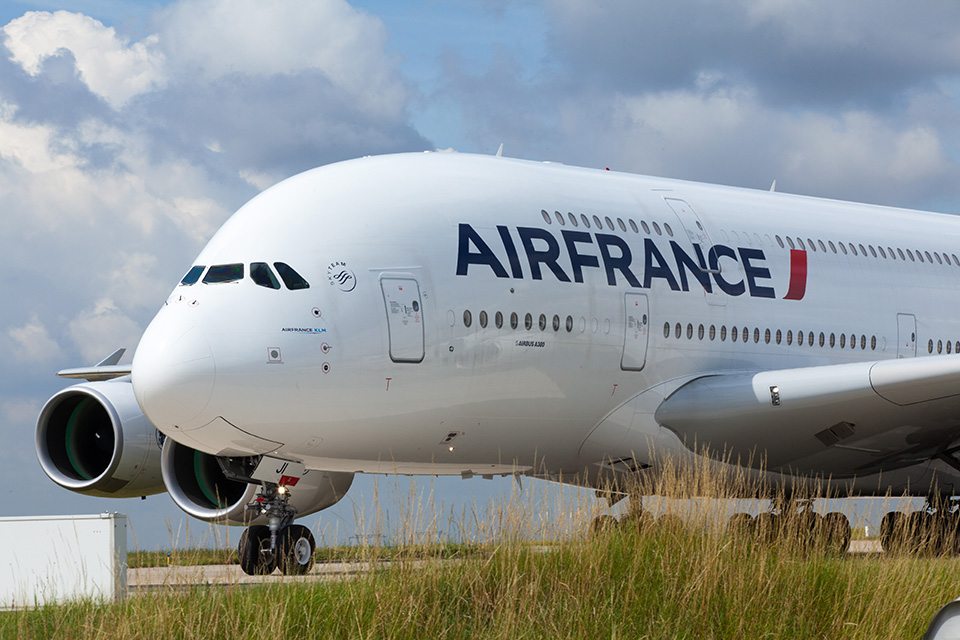An Air France crew is preparing to fly their wounded double-decker A-380 home from Canada to France, nearly two weeks after the aircraft suffered a serious in-flight engine failure over the Atlantic Ocean, and they will make the 2,650 mile trip on only 3 engines.
Air France Flight 66 landed safely at Goose Bay International Airport in Newfoundland, Canada, following the incident, which occurred en route from Paris to Los Angeles on Sep 30, but they have yet to release many details.
In videos and photos posted online, the #4 engine was clearly inoperative after the fan and cowling blew off, chunks of which landed on the Greenland ice sheet over 35,000 feet below.
Nearly 500 souls were onboard, and while a scary situation, passengers kept their cool, and no injuries were reported. Although the hours following landing were quite stressful (you can read about one such experience HERE).
Now, according to Reuters, Air France is swapping the blown engine with a spare, to serve as a weight balance to help get the super jumbo airliner home.

The blown engine, meanwhile, is being sent back to the manufacturer, General Electric, for a thorough examination and hopeful determination of what caused the accident, described by some passengers as a “loud thud and a lot of vibration”.
So how DO you fly a A-380 on 3 engines, across the ocean?
British Airways A-380 Captain Dave Wallsworth (@DaveWallsworth on Twitter) offered some very interesting and detailed insight into conducting such a specialized flight, and the training necessary to make it happen.
The @airfrance #A380 which suffered an engine failure is to be flown back with only 3 operating engines. Some notes about how that is done.. pic.twitter.com/XGe9FQ9Waf
— Captain Dave (@DaveWallsworth) October 10, 2017
FAA Orders Inspections For A380 Engines
Meanwhile, the FAA has issued an Emergency Airworthiness Directive (AD) to all owners and operators of the engine (Engine Alliance Model GP7200 series turbofan engines) to prevent failure of the fan hub, which could lead to an uncontained release of the fan hub, damage to the engine, and damage to the airplane.
“We are issuing this AD because we evaluated all the relevant information and determined the unsafe condition described previously is likely to exist or develop in other products of the same type design,” says the FAA.
The engine which blew apart in flight had 3,527 cycles since new. The AD orders fan hubs with 3,500 cycles since new or more, to be inspected within 2 weeks of the date of the AD. Fan hubs with less cycles have more time to conduct inspections.
.
– Follow Mike Killian on Instagram and Facebook, @MikeKillianPhotography
